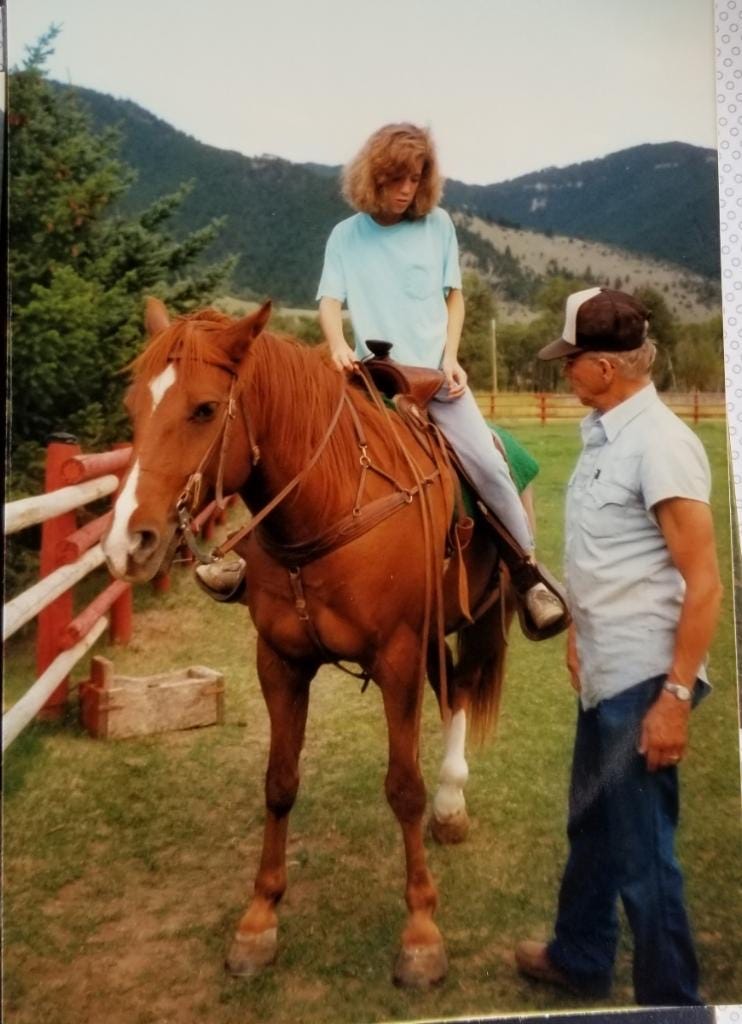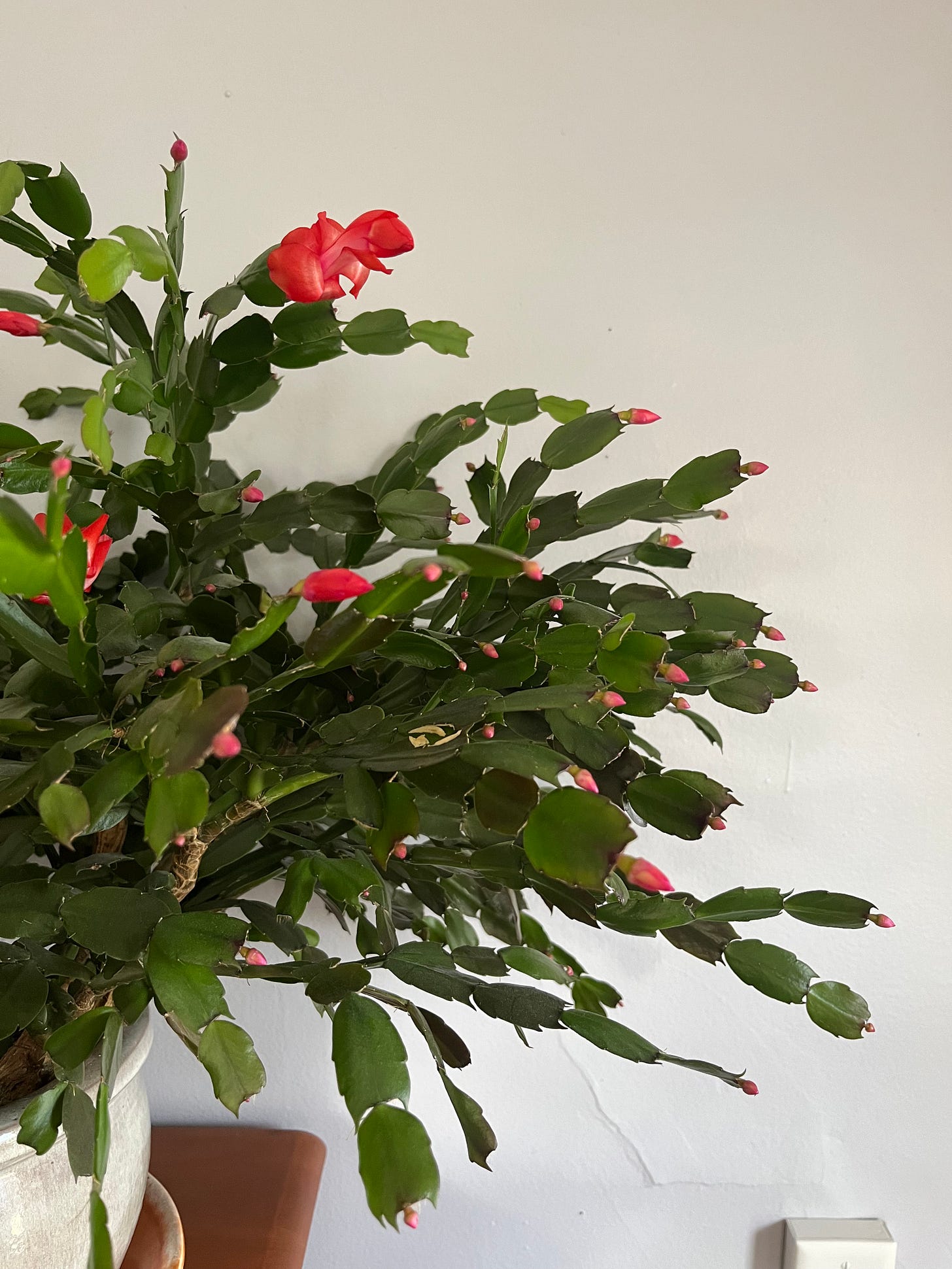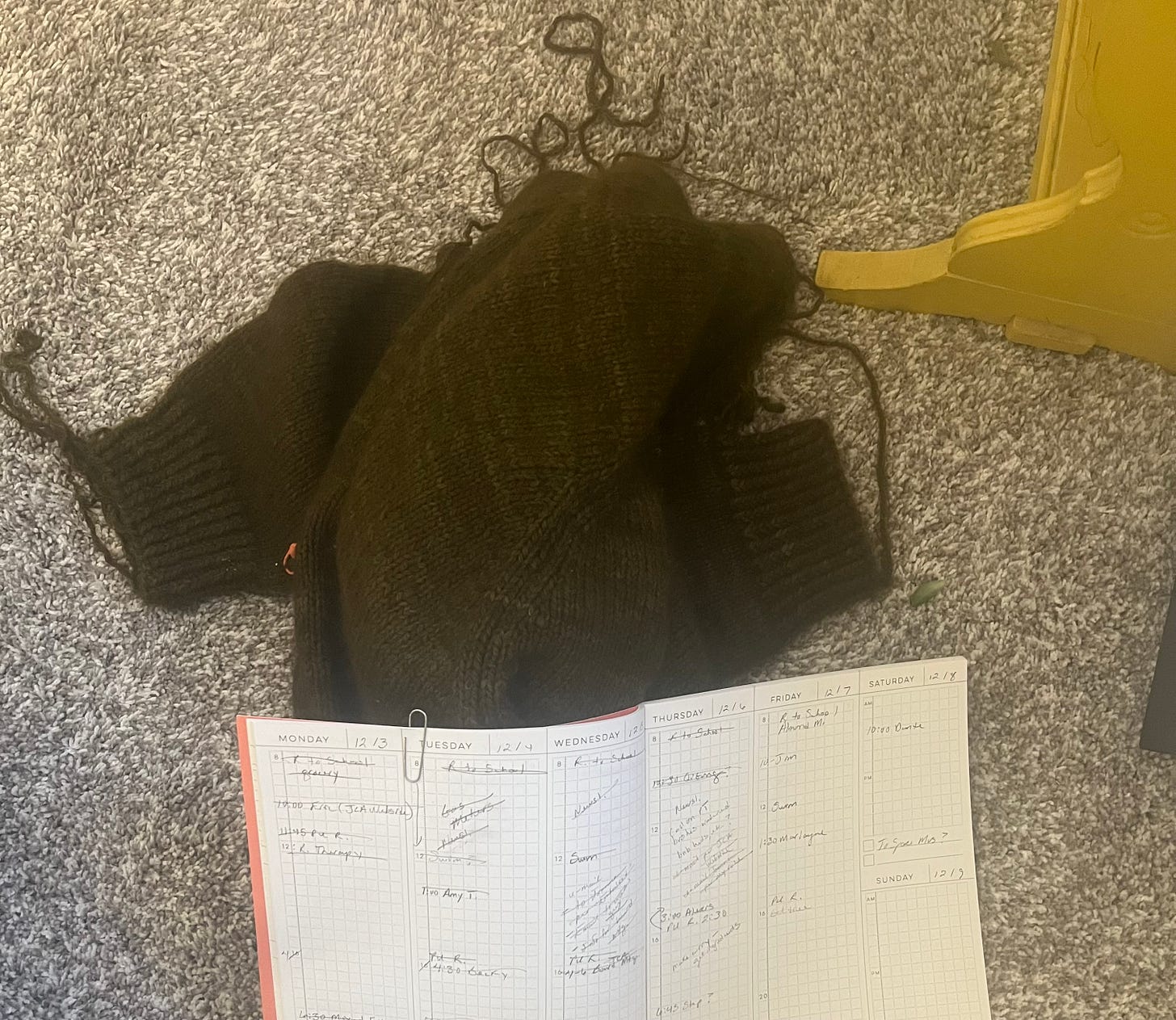
Poetry
Here’s Joy Harjo’s “For Keeps,” a poem I think I’ve used before in the newsletter. It contains a horse, and Harjo composed it in the town where my narrative takes place on my partner’s 41st birthday. I could not resist the synchronicity.
Journeying
When I was nine years old, my friend Anna introduced me to horses. Anna’s mom, Mary, was in graduate school at the local state university, and she and Anna lived in an upstairs apartment a long walk from my house. Mary, was British, and I thought her accent very exotic. Every Saturday Anna took riding lessons at a local horse farm, and one weekend she invited me along. We drove across the flat fields of corn and soybeans that surrounded our mid-western town in Mary’s brown 70’s Chevy Nova, a vehicle so cavernous it felt like riding inside an empty freight car. The farm comprised several barns joined together by enclosed walkways so that people and horses could travel from one section to the other without being pummeled by icy wind and snow in the winter or hail and rain during a summer thunderstorm. These sections included box stalls for horses boarded by their owners, walk-in stalls (narrow chutes where the horses stood tied near their water and feed buckets) for the lesson horses, and slightly fancier box stalls for the farm owners’ collection of breeding Arabian horses. Anna earned her lessons by grooming these horses and sometimes cleaning out stalls for the boarders. I watched Anna take her lesson and then helped her groom the fiery and unpredictable Arab mares and stallions. The horses terrified me. They were big and could step on, kick or bite me without warning. Yet despite this fear, I could not get enough of them. The expressive depth of their eyes, their physical heft and warmth, the way I could lean into a horse’s neck or side and feel held without judgment, calmed me. When much of my childhood felt like a swirling mess of always impending catastrophe and emotional precarity, horses offered a ground.
I began to spend every Saturday at the barn with Anna, grooming horses, mucking stalls, filling water buckets, and just absorbing the presence of these big beings. A couple of months passed before I mustered the courage to begin taking lessons. The “school” horses numbered about a dozen and had well known and publicized personalities. Like their human counterparts they were even tempered, flighty, stubborn, curmudgeonly, and affectionate. I had my favorites. Dawn, a level-headed and slow moving Palomino mare, seemed to personify safety, and when my teacher assigned her as my mount, I felt relieved. Nevertheless, Dawn held one wild card, a blind right eye. This meant that she would spook at noises or movement more frequently than her fully sighted barn mates. For a new rider, spooking, or a horse jumping an undetermined amount of feet in an unexpected direction is literally unsettling. After a spook, the rider will often find herself where she was (for a moment anyway, before she hits the ground), but without a horse, her mount having materialized several feet to the left or right of her. Another school horse, Gin Fizz, was not a favorite. The gelding had a white coat flecked with tiny grey, black, and brown spots. The horse world calls this kind of marking “flea-bitten grey.” Gin Fizz lived up to his name, not only because of his coat’s resemblance to a soda drink, but also because of his carbonated, or bouncy, gait. His trot foisted his rider further from the saddle than that of a “smooth” horse. Again, to a new rider, this felt like being tossed into the air every couple of seconds, when one was trying one’s best not to do exactly that.
I had taken lessons for several months when the barn acquired a new school horse. her name was Dream, a chesnut Saddlebred mare that the owner had saved from a meat auction and the dog food factory. She wasn’t pretty. She had the long convex “Roman nose” often decried in the horse world, a sway back, which looks the way it sounds, and a distended belly, probably due to worms. But Dream had a beautiful personality, childlike without being capricious, she exuded a quiet wonder. I believe she was really grateful to be alive. And as a child myself, I knew I could trust her. Up to that point in my riding carreer, I had still not managed to overcome my fear of cueing my horse into any gait faster than a trot. Unlike the four beat walk and trot, the canter, or lope, is a three beat gait. It’s not only faster but the rider moves very differently in the saddle. Every time my instructor asked me to canter, I panicked with fear of losing control and falling off my mount. Plus, who wanted to canter on Gin Fizz, even if my teacher told me the movement was much smoother? Dream, however, possessed her breed’s gliding gait, and this together with her calm presence gave me courage. So during one Saturday morning lesson when my teacher told us to canter, I turned Dream’s head toward the outside wall of the arena, dug my left foot into her side, and leaned forward, steeled for speed. Dream took a couple more steps of the trot and then dutifully flung herself into a canter, her two “inside” right legs lifted at the same time, while her outside left legs followed separately. We cantered four paces, at which point the feeling of flying and accomplishment overcame me, and I threw down the reigns, shouting with joy. This brought my mount to a shuffling, bewildered stop and my teacher quickly to my side as I’d just seriously imperilled my ability to stay on the horse.
I spent several more months riding Dream, and we cantered a lot. Eventually, my teacher wanted me to begin riding more difficult mounts, so it was back to Gin Fizz and his compatriots. But Dream’s quiet demeanor and welcoming gait had changed me. I began to understand that I could be on a horse and with a horse in ways that I could not be elsewhere. I spent the next thirteen years, obsessed with horses, riding all kinds of mounts, jumping fences, learning dressage, galloping bareback across open fields, arms outstretched. In the company of horses, I felt free: to make choices, “let’s follow this trail up and then go back down the mountain through the brush,” to take risks, “we can probably jump this log bareback without holding the reins,” and to be myself. Horses may react, but they do not judge or condemn. At their best, they have a presence that stills and comforts. I grew to trust this presence in a way that I could not trust a human. On the back of a horse, I experienced an affinity of minds and congruity of bodies inaccessible to me in the human world. I was me, safe, and at home.
During your childhood, what grounded you, made you feel safe, at home? What does now?
Gardening and Making/Mending
This fall before she left to spend the winter somewhere warmer, my friend P. gifted me five enormous plants, three to keep, and two to plant-sit, until she returns in March. Now, blooms cover her Christmas cactus and its twin, which lives at my Airbnb. In another week, both will be heavy with seasonal oranament. Last winter they experienced a close brush with death due to lack of water, and P. wasn’t sure that they would bloom at all. When she left them in my care, we looked at the barely visible, possible buds on the tips of the new green leaves and hoped for blooms. Now, I am anxious for her to see this picture (and others I plan to send) because the months of summer care after drought and extremity have resulted in celebration.
This blob of green fuzz is an almost complete sweater that I am trying to finish to wear this winter. The wool is soft, the fabric dense, and the sweater has a funnel neck, all necessary ingredients for keeping a chronically cold person, relatively warm. But any impetus for knitting seems to have abandoned me. The unusually warm weather certainly discourages knitting - who needs a heavy sweater when the temperature is 50 degrees? Or it could be that day-timer dropped on top of the fuzz. Other events and tasks, recorded then crossed through with satisfaction when finished, fill my time. The knitting waits. It will be there when I’m ready to return.





Beautiful evocation of the joys and perils of learning riding, Emily! Thank you for taking me back to my own learning days. Which were so long ago that I have forgotten the names of most of the horses--and all of the people!--but I still remember the feel of flying over fences and other obstacles, and loping for what seemed like miles through the fragrant sea of sagebrush outside Cody.